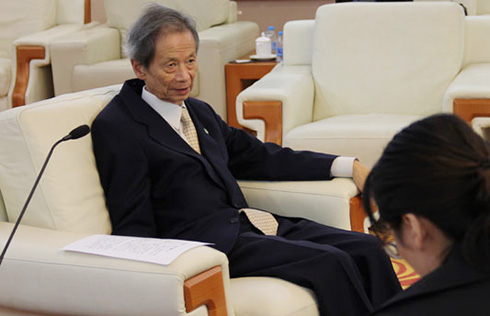Scientists call for the regulation of medical plant use
A scientific report produced in the United Kingdom, which reveals at least 28,187 plant species as having medicinal uses, is urging the better regulation of the confusing array of names linked to such flora.
The Royal Botanic Gardens second State of the World"s Plants report, which was compiled by 128 scientists from 12 countries, contains not only data on medicinal plants but also information about climate change, plant health, and the effects of wildfires.
The report by the botanic gardens, which is also known as Kew Gardens, highlights the fact that fewer than 16 percent (4,478) of species used in plant-based medicines had been cited in medicinal regulatory publications. It also noted that there are currently 15 alternative names for each medicinal species, something that causes confusion and adds to risks.
While many countries publish "pharmacopoeias" — official publications that provide precise descriptions of medicines — the texts only cover a small percentage of the long list of traditional plant-based medicines.
In China, between 10,000 and 11,250 plant species have been documented as having medicinal uses, but only 563 have been cited in the Chinese pharmacopoeia.
Monique Simmonds, deputy director of science at Kew, said: "What Kew is trying to do with traditional medicine is to provide information for scientists as well as the trade, to help identify the material and put that resource online that will assist with the quality control and public safety."
Experts also stressed the importance of correct labeling because it is "frequently misleading" such as in the case of the trade name "ginseng". "Ginseng" refers to 15 different species of plant, each with its own chemistry and therapeutic properties.
The accidental substitution by a Belgian clinic of one Chinese medicinal herb (fang ji) with another that shares the name, led to more than 100 patients requiring kidney dialysis for the remainder of their lives.
"Our research is more about understanding and putting in place what is required for this type of material to be sold," Simmonds said. "And also safety issues, because if there is another case like the one in Belgium, it could possibly lead to the ban of traditional Chinese medicines."
The report suggested resources be used to bring forward information similar to Kew"s Medicinal Plant Names service.
In December 2016, Beijing announced its aim to integrate Traditional Chinese Medicine into China"s healthcare system by 2020, "recognizing improved scientific understanding of plants and their value in treating chronic conditions".

























